|
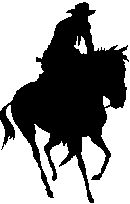
June – August 2011
BACKTRAILS
March 2011
Trouble with Misfit Lil
Horse Opera Renaissance
Fargo Creator's Pattern
December 2010
Books for Writers
Read by Jake Douglas
The Talking Wire
September 2010
Joshua Dillard
Paperback Blues
Remington Part 3
June 2010
Imagination in the Saddle
Last word on Blurbs
Remington Part 2
March 2010
Jack Martin #2
Justice and the Western
Frederic Remington
December 2009
Ross Morton
Faith and a Fast Gun
Sex and Violence
Gold Robbery Mystery
September 2009
Steve Hayes
BHE Books
Paul Lederer
Accurate words
June 2009
Jack Martin
Series Heroes
Riding the Range
March 2009
Blast to Oblivion
Tyler Hatch and Twins
Night Herding
Walt Masterson
December 2008
All Guns Blazing
Jim Bowden & Co.
Revolver Conversions
September 2008
Western Noir
Power of the Premise
West on Wheels
June 2008
Plot or Not Debate
Jack Giles
Whitney Revolver
March 2008
Walt Masterson
Plotters and Pantsers
More Horse Talk
December 2007
Peace at Any Price
Dan Claymaker
Horse Sense
September 2007
Artist Michael Thomas
Judging by Covers
The Schofield Revolver
June 2007
David Whitehead
Realistic Ballistics
Plot Twists
March 2007
Crime/western fiction
The Walker Colt
Sydney J. Bounds
December 2006
Lauran Paine
Jake Douglas & Co.
September
2006
Misfit Lil
Greg Mitchell
June
2006
Marshall Grover
Facts for Fiction
March 2006
Jeff Sadler
Mike Stotter
Writers and Money
|
BLACK
HORSE EXTRA
Lessons from a Modern Classic Hoofprints
The Ballad of Jack Martin Begin at the Beginning
Branding the Product New Black Horse Westerns
If
you happen to live outside Britain, if you happen never to visit a public
library, you will have been lucky to come across the Black Horse Western novels
published by Robert Hale Ltd of London. But 2011 has brought signs the situation
could at last be changing.
As government pressure mounted for libraries, the main market for BHWs, to
cut back on book purchases and their number of branches, authors Lance Howard and Terry James reported
at least one shop of a major UK bookselling chain, Waterstone's, was displaying
a range of the hardcover westerns for sale to the general public. And the
Hale company, through intermediaries, put on sale an ebook collection of
four BHW titles.
Internationally, with other bookstore giants losing the plot and closing
their doors, the ebook development perhaps holds the more exciting promise.
Yet we mustn't let ourselves be carried away by newspaper reports of authors
selling "somewhere in the region of 2,000" ebooks a day and making "up to
£11,000 a month" in the process.
The writers achieving these feats are doing so independently of publishers.
Although some of them had backlists with conventional publishers, their success
has been achieved by self-publishing, once maligned as the last resort of
the vain and a path to financial loss and obscurity. And the independents'
publishing of ebooks, via Amazon's market-dominating Kindle and the like,
has been accompanied by relentless promotion on a scale the biggest
publishing corporations seldom entertain.
Here is the important part –
the ebook superstars spend as much time on self-promotion as on writing their
books. They also think nothing of investing $1,000 in a cover and text formatting
services for an ebook they will price at 99c a download of which they collect
about 33c. Those seeking to emulate them embrace the same deal, more likely
to their loss than profit.
Both
groups have websites, blogs, plus accounts with social networking organizations
and all the appropriate chat boards. A superstar posts on his blog – perhaps about the stupidity of relying on author-cheating "legacy publishers" –
and 500-plus followers promptly lodge their comments, either to broaden debate
or perhaps from a pressing need to touch the hem of a digital robe. Will the
star's "luck" pass to their own ebooks, most of which in former times would have
gone no further than a New York agent's or publisher's slush pile?
It's impossible to imagine that Robert Hale Ltd, a small London company with a regular turnover
of publicity staff, is able or willing to spend as much time and money
as self-publishers on promoting genre fiction. The visible evidence is that its past practice has been
confined to providing lists of titles for library supply companies, wholesalers
and online booksellers. This is one of the strongest reasons we have a Black
Horse Extra, where the authors are invited to conduct their own publicity
via entertaining articles likely to appeal to BHW readers, thereby increasing the readers'
interest and, we hope, their number.
In our Hoofprints section this edition, we publish a list of tips that have
been suggested to people marketing ebooks. The tips are sound enough. Who
among BHW writers or readers would argue with "a good book" being a prerequisite
for marketing an ebook? But oddly, the list makes no mention of promotion!
More than one BHW writer has wondered whether he wants to self-promote his
work. The ability to write fine novels does not necessarily go hand-in-hand
with the capability, stomach or money for self-promotion. Will ebooks lead to an
overall decline in writing standards as self-promoters and their different
priorities win the day? No one has the final answer ... yet.
The four authors represented in the first Hale BHW collection have shown
no inclination to mount strenuous publicity campaigns. For around 20p per
£10 download, when the publisher keeps £2.40 after all the outside expenses
are paid, why should they bother?
The publisher's promotion, if any has been done, has failed to reach even
this website, although an early request for a cover image and basic specifications
was met.
The Extra's invitation for authors and readers to send news, opinions, and
background information remains open, as ever. Thanks, too, to our handful
of stalwart regular contributors! Their efforts benefit everybody connected with BHWs.
In this edition, besides the item here and there touching on lessons still
to be learned about ebooks, we have a lead article from newcomer Lee Clinton
about lessons of another kind – from the novel True Grit that has been renewing interest in the western genre after the box-office success
of its second movie version. Plus: Ross Morton's advice on beginnings;
Jack Martin's thoughts on hardboiled writing; and Greg Mitchell's primer
on cattle brands.
Your comments and western news are always welcome at feedback@blackhorsewesterns.com
|

Be reading this acclaimed western in UNDER A MINUTE!

Read an excerpt here
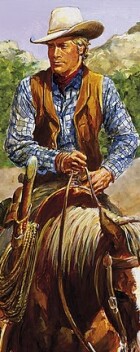
|


Charles Portis
|
Lee Clinton studies True Grit
LESSONS FROM A MODERN CLASSIC
A
body is wrapped in a bloodstained horse-blanket and a farmer admits to the
gruesome crime, but with good reason. Now the sheriff has to decide, does
he arrest or protect the guilty man when eight men come looking to settle
the score?
And how will this impact on the town the sheriff has taken
an oath to protect? This is a gritty story of judgment, consequence and the
promise of retribution. It is also the story of Sheriff Will Price – who is prepared to go raking hell to fulfil his pledge.
– Back cover
Raking Hell
New Black Horse Western
writer Lee Clinton first rode into the Extra's pages as reader
Leigh Alver with a comment on BHW veteran David Whitehead's powerful
article of a year ago, "Putting Imagination in the Saddle". He
told us in a September Hoofprint how True Grit was his favourite
western novel. Since then, that book has become a movie for the
second time and Leigh has become BHW writer Lee Clinton. In our
last issue, BHW colleague Jack Martin (aka Gary Dobbs) wondered
whether we were in the middle of a renaissance for the western
genre. This time LEE CLINTON studies what makes True Grit
work....
FOR Western lovers the release of the Coen brothers' re-make of
True Grit was a big deal. The Old West was back
on the big screen as a big box office hit, to prove once again
that the public still likes to see a cowboy movie. And this
revitalization of the public consciousness for things Western,
has some potential to stimulate an interest in Western book
sales. In fact, the book True Grit by Charles
Portis, written well over 40 years ago, rocketed into the New
York Times Bestseller list in January 2011.
But what makes this story
stand out? And are there any lessons here for BHW authors and
readers?
A little research will show
that popular entertainment has long embraced good stories out of
the Old West, but this is a relatively straightforward tale,
which could easily be summed up as: young girl
avenges the murder of her father with the assistance of a
drunkard US Marshal and a sharpshooting Texas Ranger. So,
what has it got that has ignited so much public interest?
The author, Charles Portis,
had been both a US Marine Corps Korean War veteran and an
international journalist, working in London, before turning his
pen to fiction. His first and previous novel to True
Grit was Norwood, which is not a Western.
Released in 1966, when Portis was aged 33, it is about a
discharged Marine who has also served in Korea, and embarks on a
journey to chase down a Marine buddy in New York who owes him
$70. It, like True Grit, is beautifully written
with a distinctive comic touch and arrived on the bookshelves
just after the death of Flannery O’Connor, another writer of
Southern Gothic, who could turn the ordinary into the bizarre
long before Stephen King made it his hallmark. But for me Norwood lacks some of the essential elements that
make True Grit great.
|

Audio excerpt here
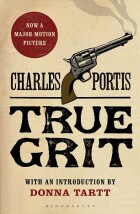

|
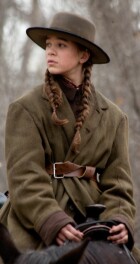
Hailee Steinfeld as
Mattie Ross
|
Grit
was published two years later in 1968. However, Portis was not to keep up this
level of output of a book every two years. In all, he has had just five
novels published. This is a modest and lopsided career for the length of
time he has been an author, and with nothing from his pen for the last 20
years. Not that quantity was ever a measure of quality. (Just ask the millions
of readers who constantly put solitary author Harper Lee into the top ten
of all time favourites, year after year.) But why? Is Portis holding back
on us? I’m sure publishers over the last forty years have been calling for
more, as have his fans.
My knowledge of his complete works is limited, as I have only read three of the five, with The Dog of the South sitting somewhere between True Grit and Norwood in order of preference, but with significant gaps in my affection between each. If books were mountains, then True Grit resides in the Himalayas, while The Dog and Norwood are peaks in other places.
Now I’m no scholarly reviewer and contemplating my navel has always held
little personal appeal, but I know what I like and I like True Grit, so let me give you my take on its success.
First, as simple as the story is, it has a strong and enduring plot. Fourteen-year-old
Mattie Ross is out for justice. Her father has been murdered by Tom Chaney
and she wants him to pay – in kind. Although Mattie is an upright young girl
of good learning (knowing and quoting the law and from the Bible from time
to time), she doesn’t seem to let this get in the way of how she believes
justice should be administered. Tom Chaney is going to hang and Mattie has
bought along her father’s old ball and cap pistol to assist with his capture!
Such contradictions between the rule of law, the grace of God, and revenge,
give insight into our leading character’s attitudes and makeup. She, like
all of us, is flawed and it is these imperfections, which include stubborn
feistiness and grim determination that make her so interesting. This is no
wooden caricature playing the part of a heroine; Mattie is on a quest, carrying
with her a sense of righteousness and vengeance, along with a mean streak,
but one she says did not come from her father. He was a gentle man, cut down
without provocation. A wrong now has to be made right in Mattie’s mind, and
that wars have been fought for lesser ideals gives credence to the plot.
|
|

Matt Damon as
LaBoeuf
|
So,
what else makes this story work? Well, we’ve touched on Mattie’s character,
so what about Reuben J. "Rooster" Cogburn, described as a tough, pitiless
man who likes to pull a cork. These two, Mattie and Rooster, at least on
the surface, are opposites in every respect from gender and age to manners
and circumstance. But they also share some very important traits. They are
part of that rare breed that takes on the world, regardless of the risks,
in pursuit of their goals and do so until the bitter end. These are attributes
that we all admire. It’s what we all aspire to be. It is at the heart of
being a hero.
And the Texas Ranger, LaBoeuf, the third member of this posse, what do we make of him?
Well, he is the one who voices all of our concerns about the shortcomings
of both Mattie and Cogburn. While he may not have all of their faults, however,
neither does he have all of their blunt virtues. Not that LaBoeuf isn't a
strong character in his own way; it’s just that the competition is too strong
– people of Mattie and Rooster’s calibre don’t come along everyday. That
he rises to the occasion during the final shootout shows that we can all
make good if we keep good company.
But is it just plot and character that makes this story work?
No, it’s more than that. I think it has a lot to do with the way the story
is told. This is Mattie recalling the most significant event to occur in
her life, but she is telling it some 50 years after it happened. Her words
are said with the utmost conviction and in the greatest of detail. So much
so in fact, that we are transported to that time and place, to relive the
moment, as if standing by her side. The language is colourful, colloquial,
clever and comic. It is exceptionally rich in description and dialogue: be
it telling of a hanging; the resale of Texas ponies that her father had purchased
shortly before his death; or the negotiations to hire Rooster to hunt down
Chaney. But this fine detail leaves us to ask, is it possible to remember
all of this with such clarity, so long after the event? Is Mattie Ross a
reliable witness?
The truth is, of course, she is not. No one is when so much time has passed,
but once hooked by a good story it is hard for us to walk away, and we hang
on to hear what happened next. So, is Mattie gilding the lily intentionally?
Or is this just an overworked ego? After all, this is a confident woman with
strong opinions on almost everything.
My short answer is, well, maybe, but probably not. So let me leave you with just one more angle, for what it's worth.
Mattie has a romantic eye. She alerts us to this at the very start of the
story when she tells of her father leaving for Fort Smith, astride his horse,
Judy, saying that he looked so impressive he might have been a gallant knight
of old. And it is that romantic eye that also frames Reuben J. Cogburn. By
the end of the story, he, too, is seen as a knight in shining armour, a man
of true grit.
"Yeah, OK, but so what?" I hear you say. Stay with me for a little longer and I’ll try to explain where I am going with this.
|

Jeff Bridges as
Rooster Cogburn
|
 Susannah Grant
Susannah Grant
|
Have you seen the Steven Soderbergh movie Erin Brockovich? I got it out on DVD because I liked Traffic, Ocean’s Twelve and Ocean’s Thirteen, which Soderbergh also directed. To my surprise I loved EB
just as much as his action movies but couldn’t figure out why. After all
it’s just about an environmental crusader and a lawyer, hardly riveting stuff,
at least on the surface. Then, by chance, while listening to an interview
recorded with the screenwriter Susannah Grant I got my answer.
Grant said that she structured the story of Erin Brockovich as a classic
love story between Erin and lawyer Ed Masry (the Albert Finney character).
Now, there is no romance or, God forbid, sex between the two, just a professional
relationship but one that is tested to the hilt, and survives on the bonds
of deep respect and care for each other. It works a treat and I take my Stetson
off to Grant, because she nailed it. I also dips my lid to Charles Portis,
because he, too, demonstrates the deep bond that is formed between Mattie
and the tough old US Marshal. She is looking for a man of true grit and finds
him. But it comes at a cost because all other men who now come into her life
are measured against Rooster, and they come up short. As the years go by,
the memory of her man of grit grows in stature, not just up to his death
25 years after the event but for another 25 years after that, to become the
unrequited love of an elderly spinster.
This theme of unfulfilled love is one that romance authors know intimately,
as it is the purest of all emotional ties. To succeed in weaving it into
the central thread of a gritty adventure story takes a great deal of skill.
But it is the final mythical element of this story that captures my emotions.
It is the return of Rooster’s body by Mattie for burial in the family plot.
It sets up a scene, not written by the author but easy to envisage by the
reader, of a time in the not-too-distant future when Mattie will finally
complete the union with her white knight, in death, lying by his side.
I pause and listen to your silence before you say, "What a crock … True Grit a love story? That’s horse…."
Well,
maybe. Let me leave you with this. You’ve seen the movie (more than likely
both of them), so now it’s time to go to the source and see what it’s really
about and make up your own mind. You can do that only by reading the book.
Enjoy.
– Leigh Alver, aka Lee Clinton; visit his website here
|
|
|
|
|

To market, to market.
|
Making a mark on the western scene
HOOFPRINTS
Whether the western, and in particular the Black Horse Western, will
be able to find a place on the ebook landscape is the question of the
moment. The online retailers typically make sales, or lack of them, the
responsibility of the publisher: "Thanks for publishing your books
on Xxxxxx, and we wish you the best of luck in promoting and selling
your books!" In turn, the typical traditional publisher has bowed out of
promotion work for even physical books beyond catalogue blurbs and lists.
Marketing advisers are presenting a set of tips for ebook selling that
goes like this: 1. A good book with a story or stories well told.
2. Price. It’s very important the book should be priced right.
3. Cover art. Titles should be easy to read, even in thumbnail size,
as on ebookselling sites, and illustration should be relevant to
story, crisp and clear. 4. Title. More important than you might think.
5. Description; that is, a blurb with an effective hook.... Oh, so it will
be easy for BHWs to storm the ebook bestseller charts once they've mastered
the formula? Sorry, not necessarily so. The mystery of what has lately
made some into "ebook millionaires", selling hundreds of ebooks a day
and earning thousands of dollars a month, remains unanswered, although
suggestions can be found in the introduction to this edtion of the Extra.

|
|
|
Misfit Lil has been a most notable BHW series heroine. The
Kindle ebook edition of Misfit Lil Cheats the Hangrope received an ecstatic
welcome from Gary Dobbs (aka Jack Martin) at his Tainted Archive
blog. He wrote, "Move over, Calamity Jane, Misfit Lil is in town!
This hot chick of the West would have Wyatt Earp tongue-tied, send Billy the Kid weak at the knees, and transform John Wesley Hardin
into a gibbering wreck. I urge anyone who considers themselves to be
a western fan to buy the ebook and show that the genre which has
always been too tough to die, has a place in this new eWestern
world. Misfit Lil is something of a paradox – thoroughly modern in
outlook yet she doesn't seem out of place in the Wild West setting,
which is great testament to the skill of author Chap O'Keefe.
I could say this is a feminist western, but I won't since the character
transcends gender and will appeal equally to either sex. In fact, female
readers who have never read a western may even find this book an accessible
introduction to this genre and its limitless possibilities." For details
and a link to Amazon's Kindle store, please scroll to the foot of this page.
And if you missed Chap's revealing article in the last Extra, "The Trouble
with Misfit Lil", click here.
|
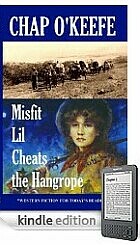
Place in a new world.
|

Guy in the black hat.
|
A conference on world affairs at the University of Colorado at Boulder found itself discussing the Western. Panelist Stuart Schoffman, a journalist and a lifelong lover of the genre who now works on an Israeli-Palestinian version of Sesame Street,
said that westerns, on the most basic level, were about the conquest of the
Frontier and the confrontations that happen between a conqueror and a frontier’s
natives. The basic story allowed for a whole host of complexities for characters
and the settings that could grow and change along with society. Brian Hollywood, a BBC journalist who still remembers watching his first western movie, High Noon,
said, "Westerns are not just good against bad. They’re able to be more complex
than that in a way very few other films can manage." The western’s complexity
had allowed it to morph from bank robbers and bandits to spaceships and intergalactic
villains. "I happen to think Star Wars is a western. What is Darth Vader but the guy in the black hat? Luke Skywalker is a gunslinger that goes after him and you’ve got the posse involved."
|
|
|
The City Council of Paso Robles, California, has undertaken a
historic- resources survey
and drafted a preservation ordinance to ensure new development
"maintains continuity with the city's historic character and scale".
Legend has it one of the favourite pastimes of notorious outlaw Jesse
James was to visit El Paso de Robles ("the pass of the oaks"), a then
south-western health resort, and enjoy the supposedly beneficial
properties of a mudbath there, plus drinking and gambling. Paso Robles
was the home of Drury James, Jesse's uncle and a founder of the town.
One of Jesse's reputed visits had him laid up at the original Paso
Robles Inn, recovering from a gunshot wound he'd sustained during a
train robbery. Jesse felt safe knowing that a maze of tunnels under the
old inn allowed him ample escape routes should need arise. Today the
city is the fastest growing in San Luis Obispo County and has a
population of about 30,000 residents.
|

Mud larks for Jesse. |
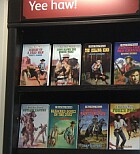
Picture for posterity.
|
BHW writers Howard Hopkins (aka Lance Howard) and Joanne Walpole (aka Terry James)
broke news of BHWs going on display in British bookstore Waterstone's. Joanne
hurried along to the Nottingham branch and snapped a couple of pictures "for
posterity" of the eight books lined up under the heading "Yee haw!". The
excitement elicited much comment at Howard's, Joanne's and Gary Dobbs's
blogs. This came from all over, centering mostly on why Waterstone's
had decided on a "Yee haw!" section instead of a Western one. Charles Gramlich
said, "Makes it sound a bit hokey for sure, but I'll buy the books under
whatever title. Gotta wonder who came up with it though." Perhaps a younger
generation will respond to the yee haw more enthusiastically than to the
western, which they might associate with grand-dad. Stand by next edition
for a name change – the Yee Haw Extra?
|
|
|
The website Screen Junkies listed its "Best Television Westerns". It said: "Television
westerns may have had their heyday in the 1950s and 1960s, but you will find
the best television westerns spread out over a much larger span of time.
The original westerns tended to be a little campy in places but stuck strong
to the western theme, while more modern westerns had a darker, more real
slant to their plots, but often included elements from other genres in the
shows." It placed Deadwood as its number one ahead of the phenomenally long-running Gunsmoke
which had 635 episodes over twenty years. "This brutal, often
disgusting look at real life in the West is everything a television show
should be. The writing and acting are simply second to none. The real-life
town of Deadwood, South Dakota, and its real late-1800s inhabitants provide
the backdrop for this three-season epic story." Number three came The Lone Ranger:
"Got its start as a radio programme, follows the titular character as he
rides about the Old West dispensing justice on his white stallion." Of Have Gun, Will Travel,
its number six, Screen Junkies said, "This late 1950s and 1960s western follows
the adventures of Paladin, a former army officer available for hire for vigilante
justice. For its time, a very dark look at the West and at humanity in general."

|
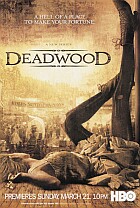
TV "look at real life".
|
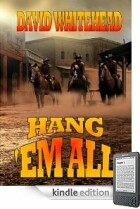
Joining the trail.
|
In late April, David Whitehead, aka Ben Bridges, Matt Logan
and other BHW authors, gave Hoofprints the exciting news of plans for more
western ebooks. "I have just entered the heady world of publishing for Amazon's
Kindle. Hang 'Em All from 1989 and All Guns Blazing
from 2008 are already waiting to be listed, and more to come.... My hope
is eventually to have my entire back catalogue available as inexpensive Kindle
downloads." Wasting no time, Dave was able a few days later to supply sharp
and brightly lettered covers for his ebooks. And he announced a third, Three for the Trail
by Ben Bridges, a brand-new collection of short stories. He also told us,
"I've already got my two most recent [thriller] collaborations with Steve Hayes available – Cast a Deadly Shadow and Under the Knife. Shortly, I'll be adding [BHWs] Cannon for Hire and Riding for Justice, so it's very much an ongoing work-in-progress." As a quick taster, here are a few lines of the blurb for Hang 'Em All:
"They rode into Austin Springs stirrup to stirrup, six men with guns in their
belts and blood in their eyes. The minute town marshal Sam Judge clapped
eyes on them he pegged them as trouble...."

|
|
|
Keith Hetherington, one of the authors represented in the BHW ebook
collection under the pen-name Tyler Hatch, has mentioned before his
liking for Hornblower-style sea adventures. He writes, "Talking about
e-books, I don't know if you're familiar with the author Julian Stockwin.
He writes a series about a character called Kydd,
a press-ganged wigmaker who lands in the lower deck of a
ship-of-the-line in
the Napoleonic Wars. The series follows his rise through the ranks to
captain, commander and so on. I guess he'll end up a rear-admiral or
something, like Hornblower. Anyway, the early stuff was good; unusual,
because most of those 'fighting sail' yarns follow the adventures of an
officer and this was a lowly, shanghaied character. But the thing here
is really the
tremendous following he has, and it is tremendous, especially in the UK
but
noteworthy worldwide, too. As a result, they've reissued the
stuff in ebooks. Stockwin
sounds very enthusiastic about it and maintains that most of the people
who
download the 'e' version go out and buy the 'book' edition.... I
subscribe to his monthly newsletter and it always has a lot of
interesting material from the days of sea battles and flying
cannonballs." Keith, as always, has plenty of interesting new material of
his own on offer. The latest BHW books list includes The Scattergun Gang
by Hank J. Kirby (May), Lonesome Range by Tyler Hatch (June), and Count
the Dead by Rick Dalmas (July).

|

Author's choice.
|

Reality check.
|
Jody Hedlund,
an author of inspirational historical romance with a strong, well-organized
web presence, considered the epublishing outlook for authors at her blog.
Among her wise conclusions: "The majority of my readers are women in the
40-60 age range ... don’t have email, might not even have computers. When
we’re immersed in the writing industry and the blogosphere, we’re surrounded
by fellow writers and industry professionals who all have the latest reading
devices. But in reality, the large majority of readers still buy regular
books.... Know your audience. Are they online? Are they computer savvy? Do
they like modern technology? Or do they prefer the tried-and-true?" And:
"We’ll likely lose a large percentage of our paper fans if we strictly epublish.
We’ll probably have to develop a new, different readership, similar to what happens when authors switch genres." Jody also quoted ebook superstar Amanda Hocking:
"The amount of time and energy I put into marketing is exhausting. I am continuously
overwhelmed by the amount of work I have to do that isn't writing a book.
I hardly have time to write anymore, which sucks and terrifies me."
|
|
|
|
|
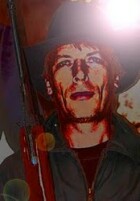

|
Gary Dobbs brings hardboiled to his western mix
THE BALLAD OF JACK MARTIN
After more than twenty years of living a life on the road, Delta
Rose
returned to the ranch he once owned with his fiancée, Etta James. A
bullet wedged close to his heart had dealt Delta the dead man's
hand.
He soon discovered Etta had a secret: they had a son who, by now a
young man, was in trouble.
Charged with both robbery and
murder, could Delta redeem himself for a past ill-spent, and save the life of
the
son he never knew he had?
– Back cover
The Ballad of Delta Rose
I’VE called The Ballad of Delta Rose my most
hardboiled western, and several people have asked me in what way is
it hardboiled?
Well, for one it’s very minimalist in style, which is something I’ve
been developing over recent years. It was all down to reading
Richard Stark’s The Hunter, which literally left me
dazed. I had an epiphany of sorts during the reading – Stark’s
minimalist prose was so incredibly powerful that the connection
between reader and story was like a physical thing and the knocks
and blows were actually felt. I mean it – this book had me, several
times, looking up open-mouthed and vocalizing, “F****g h**l!” And I
think that unconsciously I felt the desire to develop my own writing
style in this way.
I’ve always written minimalist prose but there
was something hidden in Donald E. Westlake's writing as Stark that I
wanted to discover...and if I ever do find that certain magic
ingredient, then I’ll be a better writer for it.
It's also hardboiled, I think, in the feel of the piece – the main
character is doomed and there is a certain aura of loss and regret
running through the story. It’s dark in nature and I always equate
the word hardboiled with the noir of the pulp novels and 1940s
movies, so it’s hardboiled in that sense. The story has some colour
though – romance, too, but it is a doomed romance and although the
story does resolve itself, it has no smooth edges, no sense that
issues plaguing the characters for years have been nicely and neatly
tied up. I think, hope, pray, the characters live on after the
final page is turned.
The final word in the novel is "dead." And you can’t get more
hardboiled than that!
|
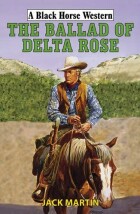

|
|
Then
King pulled the Webley from the drawer and coldly shot Clift. The man had
worked for him for over ten years, but at the moment King would have shot
his own brother if he had stood before him. He watched as Clift was thrown
backwards, a jagged obscenity opening in his chest, to crash against the
door and slide down it, getting closer to death with each and every inch.
King leaned forward in his chair, watching as Clift’s body twitched its final
death throes. Then he blew the smoke from the barrel of his gun like a dime-novel gunfighter.
|
|

|
Hardboiled is, at least to my understanding, often grim and gritty,
and it was a character in a particularly gritty comic book I used to
read as a kid, Battle Picture Weekly, which gave me
the central premise for Delta Rose. That character
was D-Day Dawson, a soldier who took a bullet on D-Day and fights
on, knowing that the bullet inside him, too close to the heart to be
removed, will eventually kill him. The same idea, hardly original
even then, is used for The Ballad of Delta Rose –
Delta Rose is carrying a bullet around inside him and the novel
depicts his attempts to put right the mistakes of his past, before
the bullet finally takes him.
Enter hardboiled fiction into the Wiki and we are told, “From its
earliest days, hardboiled fiction was published in and closely
associated with so-called pulp magazines, most famously Black
Mask.”
In its earliest uses in the late 1920s, "hardboiled" didn't refer
exclusively to a type of crime fiction; it meant any tough and
violent fiction, which also included adventure and western stories,
and Delta Rose is certainly tough and there is some
violence, but I wouldn’t call it particularly violent.
Many people have also commented on the character’s unusual name –
Delta Rose, is this a sloppy love story? I suppose it is, in many
ways, a love story but not in the traditional sense – it’s a love
for a period long gone, for a landscape raped, and a way of life
that existed only in the best fiction. The surname Rose was
important since a rose is a thing of beauty and for a short period
it is vibrant before dying away at the end of the season, only to be
reborn again the following spring. It is a fragrant name but I
sincerely hope the book doesn’t stink!
|

|
|
The
sheriff, along with two other men, helped Steve to his feet but Steve pushed
them away and fell back to his knees. He retched and vomited in the dirt,
which made the throbbing in his skull even worse. He felt the back of his
head and found it was moist with blood. There was also a goose egg that felt
like a triple yoker.
‘You OK?’ The sheriff asked.
‘Just dandy.’ Steve spoke through gritted teeth. ‘Just fine and dandy.’
|
|
|
I feel that Delta Rose is the story of both an end
and a new beginning, a rebirth. So that’s one part of the name taken
care off. The next, Delta, just sprung into my head one day. – I
thought it had a cool sound to it – Delta Rose, it just dances off
the tongue. Maybe I associate the name with certain coolness because
of my love for the delta blues music I’m always playing and, of
course, if hardboiled has a soundtrack it is the blues.
What else can I tell you all about the book? (Goddamn it – the
things we have to do to get you lot to dip your hands into your
pocket and buy the book!) Well, I’m very pleased with some of
the character moments in the book and the language used. One aspect
of the hardboiled genre I particularly admire is the way writers use
dialogue and the almost poetic flow to speech. Pick up any Raymond
Chandler and you’ll see what I mean – “Alcohol is like love. The
first kiss is magic, the second is intimate, the third is routine.
After that you take the girl's clothes off.” That line comes
from Chandler not me, but it perfectly illustrates the slightly
sardonic, maybe even cynical feel I’ve tried to emulate with The
Ballad of Delta Rose.
But for all its cynicism it is ultimately an optimistic story, and I
like that. After all, no matter how black things seem, something
bright is always to be found. Maybe because the character of Delta
is doomed, that there is no escape from his fate, he is the ultimate
optimist. And his desire to right the wrongs of the past is purely
selfless, because he knows there will be no consequences for himself
in this life and he’s not too sure there is a next one. He has
already faced all the consequences he is ever going to face. This is
not about himself. This is about those he leaves behind.
I really do feel this book is the best I’ve written – a tale which
comes from a mixture of influences including the noir genre, the
comic books I read as a kid, and pretty much every western I’ve ever
read or seen, is a benchmark for me as a writer. It is, I feel, my
most assured use of a style I’ve developed over my previous novels.
I think I’ve gained a lot from writing it and hope that I give
readers a story that touches them on every level. It has a sadness
that I hope will pass from the page to the reader’s heart, but it
also has that optimistic, life-affirming vibe.
In the words of the song, "Oh yeah, life goes on...long after the
strain of living has gone."
– Gary Dobbs, whose latest book as Jack Martin is published in July
|

|
|
|
|


|
Ross Morton's opening plays
BEGIN AT THE BEGINNING
When Clint Brennan interrupted two men kidnapping his wife, Belle, he was
shot and left for dead. But he recovered his senses to find Belle gone and himself blinded.
Most men would have given up, but not Clint. Astride a donkey, he
set out with his faithful dog, Mutt, on the trail of his wife's
abductors.
Belle, meanwhile, believed her husband dead, and when a
rich saviour came to her rescue, the people around her suggested it was
time to start again.
A tale of violence, betrayal and lies, it would
all end at Wedlock, amidst flames and bullets.
– Back cover
Blind Justice at Wedlock
BEGINNINGS and endings are important.
I’ve just sold my fifth Black Horse Western, Old Guns, a month before my
fourth, Blind Justice at Wedlock, is due out. Old Guns begins and ends
in a penitentiary, which tends to create a kind of symmetry.
This held
true also for The $300 Man: that begins with a hook and ends with a
hook. Death at Bethesda Falls begins and ends at the town’s population
sign.
The first paragraph and the last paragraph of Blind Justice at Wedlock end with the same word.
|
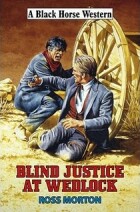
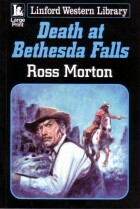
|
|
When Clint Brennan came to, he felt Mutt’s tongue licking his temple and
cheek. Maybe the dog had brought him back to consciousness. He opened
his eyes and realized that the world had changed. It was forbidding and
dark. In more ways than one, light had gone out of his life. He raised
his left arm and stroked the animal’s matted hair where the bullet had
entered Mutt’s flank; it had bled some, but the fur was now just
slightly tacky. He heard the dog’s steady panting and smelled his
breath, but he couldn’t see him. The brutal truth was that he couldn’t
see anything. He was blind.
|
|

|
Sorry, you’ll have to read the book to find out about the last paragraph!
So I’ve set up an intriguing start. The hero finds that he’s newly
blind. Worse revelations follow. His wife and horses have been taken.
He’s left with his wounded dog and a mule.
The hero is named in homage
to Clint Walker, rather than Clint Eastwood, and the book is dedicated
to Walker, too. On screen, Clint Walker commanded quite a presence and a
tenacity of spirit. My hero needs those traits in spades if he is going
to recover his wife….
It’s a quest, then? Possibly. A bit like True Grit? No, it isn’t in that book’s league, but it gives the nod, nevertheless:
A collie limped along on a lengthy leash, leading a horseman. The man’s
clothes were blood-spattered and his face was a mess. ‘God almighty,’
Pitman whispered, ‘he’s blind.’ Blind he may be, but the man rode easy
in the saddle, conveying strength of purpose and – something Pitman
hadn’t seen in a while – true grit. A cane slapped lightly at the side
of the chestnut horse. Trailing behind was a palomino, and slung over
its saddle was a body. No, it wasn’t a corpse, as there was slight
struggling movement. ‘Well, I’ll be damned.’ He removed his forage cap
and scratched his head.
In fact, the story leads down the dark alley of psychological suspense.
The mysterious Mrs Kilbride and her young master seem an ill-fitting
pair. As publisher John Hale said at the time of acceptance, "Gamlin and Kilbride
are certainly a weird pair of characters!" Theirs is an odd tale, too,
and is gradually revealed in the town of Wedlock.
There’s more, however. Crooked land deals are about to be discovered and
drastic action is necessary…. By the end of the novel, Clint Brennan’s
story seems to demand more adventures, as occurred with Corbin Molina,
the $300 man. So indeed these endings could be beginnings!
– Nik Morton, whose latest news can be found here
|
|
|
|
|
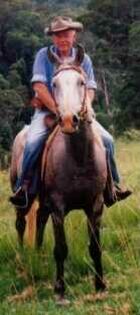
|
Greg Mitchell is back to make a mark
THE BRANDED PRODUCT
Jim and Barney were hot on the trail of a thief when they arrived at
White Rock. Soon they found themselves drawn into the mysterious
community, which was claimed by white goldseekers and restless tribes
alike.
Then a dying renegade told them the story of Crooked Foot's
gold and the pair found themselves being hunted down without knowing
why. They had to venture into dangerous territory seeking answers.
And who knew what perils awaited them?
– Back cover
Crooked Foot's Gold
THE ranchers and cowboys of the Old West recognized brands on cattle
and horses as proof of ownership and in the course of their work
encountered a wide variety. In places where stock theft was rife a
plainly recognizable brand was a necessity.
Some, upon meeting a stranger would feel that the brand on the man's
horse was as important as his name. Legitimate brands were respected
but certain "brand artists" were very adept in the use of a running
iron to change the brand to something else.
In his book The Log of a Cowboy Andy Adams describes
a confrontation between the Texas Rangers and a gang of rustlers
trying to steal cattle from a trail herd.
"Who are you and what might be your business may I ask?"
inquired the leader of the rustlers.
"Personally. I'm nobody, but officially I'm Corporal in
Company B, Texas Rangers ... well, if there isn't Smiling Ed
Winters, the biggest cattle thief ever born in Medina County. Why, I've got paper
for you; for altering the brands on fifty head of 'C' cattle into a
'G' brand. Come here, dear, and give me that gun of yours. Come on, and
no false moves or funny work or I'll shoot the white out of your
eye."
Ed Winters no doubt was very adept in the use of a running iron,
often written about but a scarce item these days. All western
aficionados are familiar with the branding iron used for stamping
the owner's brand on the hides of horses and cattle. They were made
from metal numbers, letters or symbols attached to a long handle,
heated till red-hot and stamped in a special place on the animal. We
have all seen them in western movies but we rarely, if ever, see a
running iron being used. As they often feature in western fiction,
I'll explain about them and a bit about brands generally.

It has frequently been said that the rustler's main tool was the
running iron, a piece of metal rod that could be heated and the
brand drawn on the hide. Possession of such an implement earned many
a man a starring role in a necktie party. Consequently, smart
rustlers became a little more subtle about their tools of trade and
took to carrying easily concealed metal cinch rings. These were
usually iron or brass and were available on most ranches because
many cowhands made their own cinches. The ring was heated in a fire
until red-hot, picked up between two green sticks and used to draw
the brand freehand on the animal.
It was not a particularly efficient way of branding and was
suitable only for single animals. One problem with conventional
irons is that they are hard to keep hot, but they still hold the
heat better than a cinch ring would.
Consider the rustler's problems.
He needed a fire to heat the ring
and the smoke from this was hard to conceal. The red-hot ring was
not easy to pick up, even with two sticks, so a bit of time would be
lost and the ring would be losing its heat quickly by the finish of
the brand. I recall reading that some cinch rings were made of
copper which conducts heat better than iron or brass, but these were
probably made specially. I have seen literally hundreds of cinch
rings but never saw a copper one.
Tracing a brand's outline while
juggling the hot ring between two sticks took longer than stamping
the brand on the calf and the brand itself had to be approximately
the right size. The rustler on the open range needed to do the job
and get away quickly after extinguishing that tell-tale fire.
Consequently he would not get too ambitious about the number of
calves branded at one time as every minute that his task took
increased the risk of discovery.
The operations of one, smart, small-time rustler might not be
noticed by large ranchers but multiple thieves preying on the stock
would soon attract attention, specially when the greed of some
rustlers exceeded their brain power. A fire-blackened cinch ring
could be as damning evidence as an actual running iron.
|
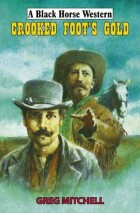


|
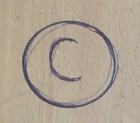

|
Brands are read from top to bottom as in Clarence E Mulford's Bar
20, from outside to inside as in the Circle C, or from left to right
as in the Tumbling JN combined, or conjoined as some stockmen say. A
letter on its back is called "Lazy" while it is "Tumbling" if falling
forwards. Rafters, benches and rockers can be added to brands. Some
brands are symbols, others are all letters or combinations of
letters and numbers. Sometimes the year of branding can be shown
either under the brand or on the animal's jaw or some other place.
Good cattle brands are not necessarily good horse brands. Horses
have softer hides and brands with sharp angles sometimes blotch on
the corners when stamped on horses.
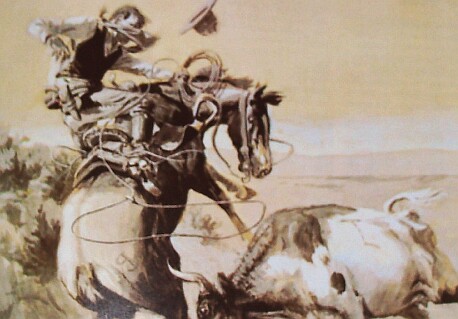
The detail from Charley Russell's painting of a cowboy in trouble with a
wild cow shows the horse branded on the off-side rump with a reverse
P on a rocker while the cow is branded on the nearside ribs with
what looks like a TL combined. If there was a slight gap under the
top of the T it would be a Bar L. The horse's brand is made by the
conventional stamp brand, but the cow's brand is a simple type that
could have been applied with a running iron.
Recently I saw a DVD of the John Wayne movie The Cowboys and
enjoyed it but the cattle brand was one of the strangest I ever saw.
It was called the Double O and was two circles widely spaced on the
steers' ribs, giving the impression that they might have been
fitted with portholes.
The 88 in my email address is my father's old brand which was really
a Lazy 88 made up of four circles.
Now that you can read brands you will have no trouble reading the
following brand that sometimes described my situation after
arguments with various horses:
RR
ED
– Paddy Gallagher, who writes BHWs as Greg Mitchell
|


|
|
|
|



|
NEW
BLACK HORSE
WESTERN NOVELS
Published by Robert Hale Ltd in May, June and July
978
The Lost Trail
|
Logan Winters
|
0 7090 9110 3
|
Bloodshed at the Broken Spur
|
Steven Gray
|
0
7090 9166 2
|
The Scattergun Gang
|
Hank J. Kirby
|
0
7090 9139 4
|
The Star Riders
|
Roy Patterson
|
0
7090 9143 1
|
Blind Justice at Wedlock
|
Ross Morton
|
0 7090 9142 4
|
The Predators
|
Owen G. Irons
|
0 7090 9124 0
|
Shadow of the Noose
|
Peter Wilson
|
0 7090 9163 9
|
Drive to Redemption
|
Mike Deane
|
0
7090 9159 2
|
Ace High in Wilderness
|
Rob Hill
|
0
7090 9067 0
|
Shotgun Messenger
|
Colin Bainbridge
|
0
7090 9091 5
|
Showdown at Dirt Crossing
|
Jack Dakota
|
0
7090 9154 7
|
Buzzard Point
|
Caleb Rand
|
0
7090 9170 7
|
Wyoming Doublecross
|
J. D. Kincaid
|
0
7090 9168 4
|
Lonesome Range
|
Tyler Hatch
|
0
7090 9172 1
|
Dalton's Vengeance
|
Ed Law
|
0 7090 9169 1
|
Smoking Barrels
|
John Ladd
|
0
7090 9131 8
|
Crooked Foot's Gold
|
Greg Mitchell
|
0
7090 9134 9
|
Outlaw Queen
|
Ethan Flagg
|
0
7090 9147 9
|
The Drummond Brand
|
William Durey
|
0
7090 9178 3
|
No Quarter at Devil's Fork
|
Terrell L. Bowers
|
0
7090 9185 1
|
The Ballad of Delta Rose
|
Jack Martin
|
0
7090 9188 2
|
Count the Dead
|
Rick Dalmas
|
0 7090 9191 2
|
Revenge for a Hanging
|
Richard Smith
|
0 7090 9193 6
|
Showdown at Snakebite Creek
|
Thomas McNulty
|
0 7090 9202 5
|
|

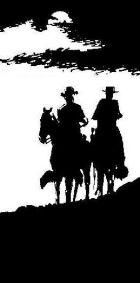
|
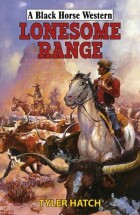
|
Black
Horse Westerns can be requested at public libraries or ordered at bookstores. They can be bought online from the publisher at www.halebooks.com,
or from other retailers including Amazon, Amazon UK, WH Smith, Blackwells
and The Book Depository ("free delivery worldwide").
Trade inquiries
to: Combined Book Services,
Units I/K, Paddock Wood Distribution
Centre,
Paddock Wood, Tonbridge, Kent TN12 6UU.
Tel: (+44) 01892 837 171 Fax: (+44)
01892 837 272
Email: orders@combook.co.uk
US distributors: Independent Publishers Group,
814 N. Franklin St. Chicago, IL 60610
Tel: 312-337-0747 Fax: 312-337-1807
Customer service: frontdesk@ipgbook.com
Orders: orders@ipg.com
For Australian Trade Sales, contact DLS Distribution Services, tradesales@dlsbooks.com
For Australian & New Zealand Library Sales, contact DLS Library Services, swalters@dlsbooks.com
DLS Australia Pty Ltd, 12 Phoenix Court, Braeside, 3195, Australia.
Ph: (+61) 3 9587 5044 Fax: (+61) 3 9587 5088
|

|
|
AND AS BLACK HORSE EXTRA E-BOOKS . . .
|
|
|
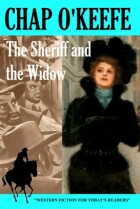
99c
amazon.com
69p
amazon.co.uk
"You could as well have been watching a movie as
reading a book. . . O'Keefe writes westerns with the
coolness of a hired gun."
– New Zealand Herald
"There's
nothing about this I didn't enjoy ... I have two O'Keefe novels on
the way and this has whetted my appetite for them.... I'm loving this western.
I was travelling today and The Sheriff and the Widow was my book for the trip."
– David Cranmer,
of Beat To a Pulp
Read an excerpt here
|
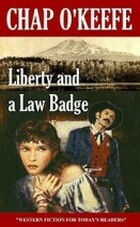
$2.99
amazon.com
£2.09
amazon..co.uk
"This book is a lot of fun, pulpish but with a sharp, contemporary edge. The dark, complex plot, the emotional angst, and the
gritty storytelling remind me very much of many westerns published in the
fifties by Gold Medal, by authors such as Lewis B. Patten, Dean Owen and
William Heuman. The pace is very fast,
the action scenes are handled well, and Joshua Dillard is a very likable
hero, tough and competent enough to handle just about any situation, despite
his occasional self-doubts, but not a superman by any means. I’m ready to
read more about him right now.... If you’re a fan of hardboiled action westerns,
I definitely think you’ll enjoy it."
– James Reasoner
|

$2.99
amazon.com
£2.10
amazon.co.uk
"Take it from someone who has collected and read westerns for more than 40 years, Misfit Lil Cheats the Hangrope
stands head and shoulders above the current crop of competitors! It has a
fabulous story with – to this reader, at least – a completely unforeseen
dénouement, vivid, lively characters and regular bursts of action
which ... aren't just shoehorned in to beef things up a bit. I have read
Chap O'Keefe for a long while now, but genuinely feel that this is his best
to date!"
– David Whitehead,
aka Ben Bridges
|
|
|
|
|
|
|